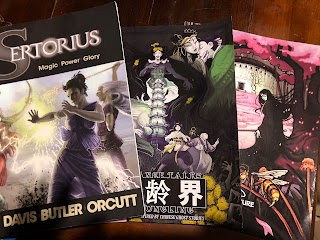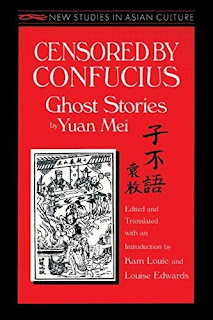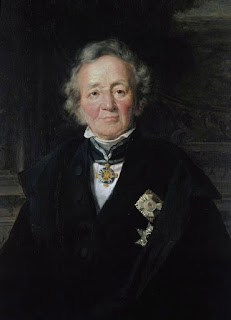This is a systemless and simple time travel RPG, made for fun, that can be used with any game of your choice.
PREFACE
Time Fighters is a serious game. A very, very serious game. We take the topics and content of history with the grave concern it deserves. For this reason, we apologize for the tone. Originally, we set out to make a game that was written in a style suitable to the gravity of the topic. Unfortunately, due to extreme budget constraints, our hiring options were limited and we were forced to compromise on tonal consistency. You will find the system and its mechanics were all designed by competent professionals who took time to craft a playable game. We did not skimp when it came to engineering the framework of Time Fighters. It is merely in the writing where the problem arises. Hopefully this won’t detract from your enjoyment of the game. If you find it does break your enjoyment we would like to take this moment to clarify that we have a strict, no return policy, for all of our games.
-The Bedrock Family
TIME FIGHTER CONCEPT AND RULES
Time Fighters is a game about time travel, time travel institutes and historians run amok. The most important field of study, ever, is history. And you play yourself, but as a historian, belonging to the aforementioned institutes, hellbent on altering or preserving the past, in order to realize a grand vision for the present.
Time Fighters is meant for any system. All you do is apply to the setting details and new rules below to your existing system and play.
INTRODUCTIONThis game makes no distinction between the game world and the real world. All the facts of the world we live in are true, this is indisputable and only madmen would say otherwise. Not a single line of history or a single detail of the present day has been altered in the making of this game. Time Fighters takes place in the real world. By the same token, you cannot be anyone other than yourself. The contrarian position to this assertion is a proclamation of one’s insanity. Therefore, in this game, you always play you. You never play anyone else. You are your player character. If you die, in this world or in the game world, you cannot and may not roll another character. Nor can you come back from the dead. No one has ever come back from the dead, such fantasies only exist in movies and trashy horror stories or fantasy novels. This game rejects these rubbish ideas. Should you die, go to the DON’T FEAR THE REAPER section below.
DON’T FEAR THE REAPER
Death is the end. There is no coming back from the dead. It is natural and part of life, something to be accepted with the appropriate amount of mourning and sadness, but also a modicum of celebration. If you should die in the game, have no fear. You continue to play the game as yourself. This setting exists in a multiverse. And while you may have kicked the bucket in one reality, you can be sure that there is another reality out there waiting where you have not died. So, when you do die, and die you will, the game continues, as if you hadn’t. However, there is one slight hiccup: the world may change. Or rather the reality you shift to may be different than you one you died in in key ways.

Any time a player character dies, the Gamemaster makes a Cliometrics Computation to determine how this new reality is different from the previous one. The Cliometrics Computation is a complex and scientific system that draws on a wide range of academic fields to determine the shape of any given historical reality. It is far too complex to explain, but rest assured your GM will arrive at a 100% accurate and truthful reality by following carefully outlined procedures. Changes may be small, for example you may have been blonde in the previous reality but brunette in the new reality. Changes can also be profound: perhaps the old reality was much like our world, while the new reality is governed by a council of Neanderthals who rule over humanity like iron fisted gods.
TIME TRAVEL AND THE HISTORY WAR
Time Travel was invented in 1972. During the cold war, the Americans and Russians were in a desperate race to alter history through the use of time travel technology. They both succeeded in inventing time travel at precisely the same moment, and two forms of technology were invented: The Tachyonic Telephone and the Tipler Tube. This also sparked the first History War.
The Tipler Tube is like the Tipler Cylinder, except it need not be infinite and it resembles a subway station (essentially a subway cart in a spinning system of tunnels). Invented by the Americans, the Tipler Tube was originally believed to be impossible without an infinite length cylinder. However, the Americans used advanced mathematics and gumption to shorten the length of infinity, resulting in something closer to the size of a small town. A Tipler Tube requires an area of at least 2 square miles. Tipler Tubes are cost prohibitive, don’t allow for a free range of movement but are solidly reliable. When you use a Tipler Tube to travel back in time, wherever the Tipler Car parks, that is the place you must return to in order to go back to your own time or another. This creates greater security problems, as others can hijack the car for their own purposes. For this reason, it is wise to have at least one Tachyonic Telephone with you when using a Tipler Tube.
The Tachyonic Telephone is just what it sounds like, a rotary telephone that can be used to dial any date in history and send the user and up to four others back or forward in time. It was invented by the Russians. Originally it was limited to one’s own timeline, which set the Russians back in the war on time. Now it can take travel to any point in history. Tachyonic Telephones are a cheaper method of time travel but less reliable. Tachyonic telephones always have a flat 5% chance of sending you to the wrong time. To determine the time you travel to, roll 4d10, and then lay out the results from left to right, beginning with the lowest result (treat 0s as zeroes): that is the year you arrive in. To determine if the date is BCE or CE, roll 1d10, a result of 1-5 is BCE, and a result of 6-10 is CE. After use, Tachyonic Telephones require one hour for their internal mechanisms to reset before they can be used again.
The First History War began in 1972 the moment the Russians and Americans invented time travel. The two countries waged a bitter series of campaigns, each venturing back into the past to undo the other’s history, while strengthening their own present. Thankfully, the war ended peacefully with our original history fully intact, with the fall of the Soviet Union in 1990. The two nations signed a time treaty in the Mexico City, along with thirteen other countries, where all parties agreed to ban use of time travel technology. The Second Time War began the following day in that same year, when the Americans used time travel to make Alaska an American State. This detail almost went unnoticed, except the emergence of a new computing software that allowed for modeling potential changes in the historical timeline, which the Russians used to detect changes to history. This software was destroyed but not before it was stolen by the recently established Rankean Institute. Since that time, the world has been mired in the Second History War.
The key difference between the first history war, and the second, is the first was a fight primarily between the Americans and Russians. The second History War is not only a global one among many nations, but saw the rise of Time Fighting Institutes, rogue history departments and amateur historians who repurposed government time travel technology to advance their own ideologies.
THE CLIOMETRICS COMPUTATION
This is a sound and accurate procedure for calculating any change to reality when a character dies. The second portion of the method is also used anytime Players or NPCs alter history in a substantial way. It draws on all the latest academic disciplines and science to produce any new details or changes that arise through the process of shifting from one multiverse to another. Each reality has its own history, and this history can vary from small to large details. And those details shape the course of events over time. So change as simple as the Emperor Titus dying in 80 CE rather than his real death date of 81 CE, may have a cumulative effect that causes the Sack of Rome to occur in 410 rather than 420 CE, which lead to other changes, like bell bottoms going out of fashion before the 1990s. The GM needs to factor in all the details and approach this procedure with the rigor it demands, to produce an accurate and true account of the history.
Method I
Method One is the official method, and therefore the best. It requires history books. If you don’t have history books, we do not understand why you are playing this game but we do offer a second method for people who prefer to stock their shelves with escapist nonsense. Whenever a player dies, the GM randomly selects any history book from his or her shelf, then places the book down on a table (any table will do so long as the legs are sturdy and made from a durable wood). Once the book is upon the table, the GM should select a random page, then close his or her eyes and point to a random passage on that page. Whatever that passage describes is the detail in history that has been altered. Should that passage be a bloviating section of analysis, or otherwise unusable, simply go to the next passage as needed, till you come upon a section with concrete historical details suitable for change.
The Second Portion: Computation
This is the second and most important part of the Cliometrics Computation, the computation itself. When characters die, this portion follows the first portion of Method I. If characters or NPCs change history in the game, you take the details of those changes directly to this step.

Method II
This method is for those who do not have history books to use as outlined in method I. Using this method allows such people to fully engage the concept of the Cliometrics Computation despite the enormous personal failing of not stocking their shelves with history books. This method is extremely simple. We kept it as simple as possible, because we are well aware of the difficulty Method II users probably have following even the simplest of instructions. This is Method II: obtain history books at your library, local bookstore or through an online vendor and then use Method I.
HISTORY IS WHAT THE GM SAYS IT IS
History, as stated before, is the same as our reality. Whatever has happened in the real world, has happened in the game world. But this is a multiverse, and what multiverse you are in, shapes the details of history. And the one person at your table who can faithfully recall the facts of the history of your reality is the Gamemaster. For example, if your GM tells you that the Cold War ended in 1979 with the Iranian Revolution or that Constantinople fell to the Mongols in 1489, this is not evidence of his or her immense stupidity and ignorance, but a reflection of the strange reality you inhabit. So, what the GM says goes, even if that means World War I was over inflating cheese prices, or sparked by a love triangle involving Franz Ferdinand, Nicholas II, and Henriette Caillaux.

Multiverses are unusual places, and the GM is always right. So, this applies to basic facts as well. For instance if the GM tells you that the average human walking speed is 27 miles per hour, or that a penny dropped from the empire state building could kill a man, this is a reflection of the physics governing your reality and not, as you might at first assume, evidence that your Gamemaster fails to grasp the physics of your reality.
FIGHTING TOWARD THE FUTURE
Time travel into the future, is impossible. One may use existing time travel technology to travel back and forth to any point from the past to the present, but one may never go beyond the present into the future. However, the fight for such technology is on! It is only a matter of time before someone, somewhere invents a way to take the battle into the future.
TIME TRAVEL AND THE LAW
Governments all want a monopoly on time travel. Every nation, without exception, has strict laws prohibiting use of time travel technology. Only government agencies may officially travel through time, and even these are often limited, officially, by treaties. In every country, even nations where such punishments are normally considered inhumane or illegal, the penalty for using time travel technologies is immediate execution without a trial. There are no exceptions to this rule, except one, in 1997, when the executioner accidentally walked into a passing bullet and was unable to render justice.
TIME FIGHTING INSTITUTES
Toward the end of the First History War, the time travel technologies that were once monopolized by governments, fell into the hands of historians and nefarious groups. These often take the form of fully funded institutes, usually with a false stated purpose due to the strict laws governing time travel.
AMATEUR AND INDEPENDENT HISTORIANS
This vary tremendously, but they are all amateur history buffs and enthusiasts who have managed to obtain time travel technology to use for their own purposes. Some seek to preserve history, some to change it, and some to sew the seeds of chaos.
THE CLIODYNAMICS INSTITUTE
This school is strictly interested in traveling through history in order to understand it. They make the fewest possible changes in their efforts. Extremely cautious, they rarely make use of their time travel technology, often spending years, even decades planning any excusion into the past.
THE RANKEANS
The Rankeans seek to restore history to its original state. They fear the chaos that the History War and the other institutes are producing. They use a special computer program called The Tablet, which, provided it is given accurate data from the past and present, can produce a clear narrative of events in history, as they occurred, before time travel began altering things.
THE IDEALISTS
This group seeks to change the past to create an ideal present. They are not a single institution or organized group but a philosophy embraced by a loose network of affiliated tenured historians. For this reason they often vary in their methods and goals.
THE MICROHIST INSTITUTE
This group aims to adjust history on the small scale: the individual. It believes in using history to change the present, but through a series of minor alterations that build to enormous change with time. Something as simple as providing a broom to a monk in 14th century Florence may be important and impactful when combined with other changes. It is divided into two camps: those seeking to restore the past through incremental change and those seeking to change the present through incremental change.
THE REVOLUTIONARIES
These scholars come from a wide range of academic backgrounds. They are similar to the Justiciers but with a focus on creating an ideal past, rather than an ideal present. They seek to liberate people in history through revolutionary means.
THE AUGUSTANS
The Augustans believe in preserving and spreading the glory of Rome. Their goal is to extend the Roman Empire into the present by preventing its fall at every possible step in history. There are similar groups seeking to promote the glory of other places and concepts, but none match the prestige and power of the Augustans.
THE JUSTICIERS
The Justiciers originated from a small history department of like-minded scholars, but have grown over the years. Their purpose is to bring to justice those in history who have committed misdeeds. There are many different branches of the justiciers, all coming from different perspective and schools of thought in history, so their rationale and ideals vary. All branches believe any historical changes produced by their actions are acceptable collateral damage.
TIME RIDERS
These are bikers, racing enthusiasts and criminals who travel through time on motorcycles. They really just adapted the Tachyonic Telephone, kludging it to a motorbike. There isn’t any one overriding school of thought, but generally these groups use time travel for personal reasons (like sleeping with historical figures or winning the lottery), or to advance their criminal organizations interests. Their goals depend on the time riders involved.
THE ANNALES SCHOOL
Similar to the Cliodynamics institute in many ways, the Annales emphasize the importance of the slow glacial change of history: at the large scale. Their mantra is “Geography is destiny”. What matters is the longue duree. Small changes are unimportant, only big changes over long periods of time matter. This school began nobly enough, but they have devolved into psychopaths who believe only the most significant actions have consequences and therefore there should be no constraints on time travel behavior. For this reason, they gleefully travel back in time, slaughtering at whim, knowing full well it makes no difference in the end*.
GOVERNMENT AGENCIES
Many Governments seek to control and change history to their advantage. The Russians and the Americans have many Time Agents influencing history and infiltrating the various institutes of time. But other nations are involved in this as well.
*This is just for humor. My favorite historian is Fernand Braudel of the Annales school.
























